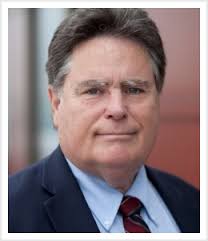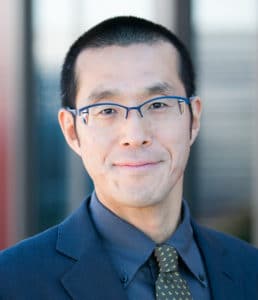Contact Mace News President
Tony Mace tony@macenews.com
to find a customer- and markets-oriented brand of news coverage with a level of individualized service unique to the industry. A market participant told us he believes he has his own White House correspondent as Mace News provides breaking news and/or audio feeds, stories, savvy analysis, photos and headlines delivered how you want them. And more. And this is important because you won’t get it anywhere else. That’s MICRONEWS. We know how important to you are the short advisories on what’s coming up, whether briefings, statements, unexpected changes in schedules and calendars and anything else that piques our interest.
No matter the area being covered, the reporter is always only a telephone call or message away. We check with you frequently to see how we can improve. Have a question, need to be briefed via video or audio-only on a topic’s state of play, keep us on speed dial. See the list of interest areas we cover elsewhere
on this site.
—
You can have two weeks reduced price no-obligation trial for $199. No self-renewing contracts. Suspend, renew coverage at any time. Stay with a topic like trade while it’s hot and suspend coverage or switch coverage areas when it’s not. We serve customers one by one, 24/7.
—
Tony Mace was the top editorial executive for Market News
International for two decades.
Washington Bureau Chief Denny Gulino had the same title at Market News for 18 years.
Similar experience undergirds our service in Ottawa, London, Brussels and in Asia.

President
Mace News

D.C. Bureau Chief
Mace News

Federal Reserve
Mace News

Reporter and expert on the currency market.
Mace News

Reporter and expert on derivatives and fixed income markets.
Mace News

Financial Journalist
Mace News

Reporter, economic and political news.
Japan and Canada
Mace News
WASHINGTON (MaceNews) – As U.S stocks rocketed up spectacularly Wednesday after President Trump’s pivot on tariffs, the battle of titans – the USA and China – emerged as the main event for months to come.
At an afternoon White House event, President Trump said, “Somebody had to do it,” vs. China. A more skeptical former Democratic Treasury Secretary Larry Summers told CNN, “Bullies back down when there’s great pressure.”
What President Trump did was to first raise tariffs against China by 125% as China went to 84% vs. the USA, before surprising everyone with his Truth Social posting that paused most other new tariffs for three months.
However the base 10% across-the-board tariffs remain in place, tariffs targeting autos continue, while Treasury Secretary Scott Bessent negotiates “bespoke” tariff levels with more than 75 other countries. The sudden reversal on Trump’s part did not rule out other sudden changes in policy to come, leaving the atmosphere of uncertainty in place.
Meanwhile the U.S. stocks rocket rally was historic. Seeing the Dow Jones Industrial Average go from deep in the red to a 2,700 point 7% gain, with the S&P up 5.7% and the Nasdaq up 11.4% would have seemed to be a fantasy only a few hours earlier.
As fears of a coming recession evaporated for the moment, share prices of many firms went up by double digit percentages. Bally’s Corp was up 37%. Bitcoin dominated MicroStrategy rose 26%. Kohl’s gained 24%. Delta Airlines was up 23% and its airline peers did much the same. Robinhood Markets jumped 23% as did AMD. Tesla shares rose 21%.
Trump administration officials, like Treasury Secretary Bessent in an afternoon appearance in the White House briefing room, spread out to insist the tariffs pivot and the focus on China was the plan all along. Not surprisingly there was a wave of commentary to the effect Trump blinked in the face of five trading days of huge losses for U.S. stocks and the overnight surge in interest rates, the escalating selloff across asset classes and a weakening of the dollar.
President Trump’s 1:18p ET Truth Social posting hit the market like a lightning strike. “I have authorized a 90 day PAUSE, and a substantially lowered Reciprocal Tariff during this period, of 10%, also effective immediately,” he wrote. “At some point, hopefully in the near future, China will realize that the days of ripping off the U.S.A., and other Countries, is no longer sustainable or acceptable.”
The faceoff between the U.S. and China appeared to threaten a coming shortage of pharmaceuticals, for which China is America’s main supplier by far. At the same time President Trump Tuesday night threatened to impose sweeping tariffs on pharmaceutical industry trade “soon.”
But it was evident Wednesday afternoon that while the Trump administration’s era of uncertainty was not ended the extreme market pessimism since a week ago’s “Liberation Day” seemed to have been turned around – at least for the time being.
– Uncertainty High Amid Trump Policy Changes, But Economy Still ‘In A Good Place’
– Fed Doesn’t Need To Be ‘In A Hurry’ to Lower Rates
By Steven K. Beckner
(MaceNews) – Federal Reserve Chair Jerome Powell said Friday the Fed has to wait for more “clarity” on the economic effects of the Trump administration’s trade and other policies before making any adjustments to monetary policy.
Because of “high uncertainty” about the outlook and because the economy is still “in a good place,” Powell repeated that the Fed’s policymaking Federal Open Market Committee does not need to be “in a hurry” to change its interest rate settings.
Although the Fed chief acknowledged that “downside risks” to the economy have increased, he seemed to strongly imply that the FOMC will not be cutting the key federal funds rate when it next meets in early May, as he spoke to the Society for Advancing Business Editing and Writing.
Lately, Powell and his colleagues have been stressing the heightened uncertainty about the outlook due to the Trump administration’s trade and other policies, and he continued in that vein Friday, even though, as he noted, there is actually more certainty about the specifics of Trump’s tariffs in wake of the Wednesday “liberation day” announcement.
At its March 19 meeting, the FOMC voted to leave the federal funds rate unchanged in a target range of 4.25% to 4.5% while tilting toward further rate cuts. The 19 participants projected the policy rate will end 2025 at 3.9% (a range of 3.75% to 4.00%) in the quarterly Summary of Economic Projections – the same as in the December SEP.
At the same time, the FOMC voted to slow the pace of shrinkage in its portfolio of Treasury securities or “quantitative tightening.” Though Powell said the change had no monetary policy significance, some saw it as a form of monetary easing.
The FOMC will meet again on May 6-7, but there won’t be a new SEP funds rate “dot plot” until the June 17-18 meeting.
Since its March meeting, the FOMC has gotten disappointing data news, as its preferred inflation gauge, the core price index for personal consumption expenditures (PCE) was reported up a worse than expected 0.4% in February or 2.8% from a year earlier. The overall PCE rose 2.5%. President Trump’s aggressive tariff policies have amplified inflation concerns and lifted inflation expectations, while also causing financial market turmoil.
On the employment side of the Fed’s dual mandate, the Labor Department reported Friday morning that non-farm payrolls rose a surprising 228,000 in March, following a downwardly revised 117,000 in February. But the unemployment rate rose a tenth to 4.2%. Average hourly earnings gains slowed from 4.0% to 3.8%. Earlier this week, the agency reported that job openings have fallen to their lowest level in four years.
A decline in consumer confidence and cooling consumption have led to expectations of slower economic growth and a softer job market. In its latest GDPNow forecast, the Atlanta Federal Reserve Bank estimated real GDP contracted by 2.8% in the first quarter, following positive growth of 2.4% in the fourth quarter. And, in an early March reading, the Institute for Supply Management’s manufacturing index dipped back below 50 for the first time since December, as the production, employment, and new orders components all weakened.
Overhanging the economy and financial markets, meanwhile, has been the added uncertainty injected by the Trump administration’s trade policies.
Despite all these economic and financial clouds, Powell avoided talking about a potential recession. Indeed, at the SABEW event, he continued to emphasize the relative strength of the economy and labor markets.
“While uncertainty is high and downside risks have risen, the economy is still in a good place,” he said in prepared remarks. “The incoming data show solid growth, a labor market in balance, and inflation running much closer to, but still above, our 2% objective.”
Referring to Friday morning’s employment report, Powell said it showed the unemployment rate is “still in the low range where it has held since early last year.” And he observed that “over the first quarter, payrolls grew by an average of 150,000 jobs a month.”
“The combination of low layoffs, moderating job growth, and slowing labor force growth has kept the unemployment rate broadly stable,” he added.
If anything, Powell seemed more worried about inflation, noting that “progress toward our 2% inflation objective has slowed.” He added that “higher tariffs will be working their way through our economy and are likely to raise inflation in coming quarters.”
Because of tariff anxieties, Powell said “both survey- and market-based measures of near-term inflation expectations have moved up,” but he continued to insist that longer-term inflation expectations “remain well anchored and consistent with our 2% inflation goal.”
While remaining upbeat about the economy, Powell was anything but complacent at the end of a turbulent week in financial markets.
Speaking two days after President Trump’s launch of worldwide reciprocal tariffs triggered a major stock selloff and a U.S. dollar plunge, Powell said, “we face a highly uncertain outlook with elevated risks of both higher unemployment and higher inflation.”
Pointing to the administration’s roll-out of higher reciprocal tariffs, as well as planned changes in tax, regulatory and immigration policy, Powell said “our monetary policy stance is well positioned to deal with the risks and uncertainties we face as we gain a better understanding of the policy changes and their likely effects on the economy….”
But he said, “it will be very difficult to assess the likely economic effects of higher tariffs until there is greater certainty about the details ….”
“While uncertainty remains elevated, it is now becoming clear that the tariff increases will be significantly larger than expected,” Powell continued. “The same is likely to be true of the economic effects, which will include higher inflation and slower growth.”
“The size and duration of these effects remain uncertain,” he went on. “While tariffs are highly likely to generate at least a temporary rise in inflation, it is also possible that the effects could be more persistent.”
Powell said the Fed’s “obligation is to keep longer-term inflation expectations well anchored and to make certain that a one-time increase in the price level does not become an ongoing inflation problem.”
But for the time being, the FOMC will have to “wait for greater clarity before considering any adjustments to our policy stance,” he said. “It is too soon to say what will be the appropriate path for monetary policy.”
The theme of waiting for clarity was one Powell returned to again and again as he responded to business reporters probing for when the FOMC might change its rate settings.
Because of uncertainty about the ultimate effects of tariff and other non-monetary policies, Powell said “this is a good time to take step back and let things clarify…That’s why it’s just too soon to say what the appropriate response should be….”
“We’ve taken a step back,” he continued. “We’re watching to see what (Trump) policies turn out to be and how they affect the economy …. Policy is in a good place to do that.”
Powell again described monetary policy as “moderately restrictive, which is appropriate since inflation is well above target.”
The funds rate target range of 4.25% to 4.5% is “appropriate,” while “we’re waiting for greater clarity before we consider adjustments,” he added. “We’re waiting fore clarity about what our policy should be.”
As he has been saying all year, Powell said, “It feels like we don’t need to be in a hurry….”
“Inflation is going to be moving up; growth is going to be slowing, but it’s not clear now what the appropriate path for monetary policy is going to be,” he elaborated, repeating, “We have to wait before we make those adjustments…”
In the current economic and financial climate, “there’s a lot of waiting and seeing, including by us….,” he remarked.
If the Fed’s two mandates of price stability and maximum employment diverge, and inflation rises along with unemployment, Powell said the FOMC would adopt a predetermined strategy: “We would think about how far each variable is from its goal; how long it will take each to get back and compare … Then you look at that and say what do we need to do..If one is further away you focus on that….”
But he added, “we’re not actually facing that today.”
Powell’s fellow policymakers seem to be largely in agreement with his approach, judging from comments made this week.
On Tuesday, New York Federal Reserve president John Williams said he expects the central bank to keep rates unchanged for “some time” as the Fed assesses how tariffs affect the economy.
“There’s a lot of uncertainty about how the economy will evolve and a lot of uncertainty about all the policy actions,” the FOMC Vice Chairman said. “We’ll see about that, but also how the US economy, and importantly, the global economy, respond to these developments.”
On Wednesday, Fed Governor Adriana Kugler said she “will support maintaining the current policy rate for as long as these upside risks to inflation continue, while economic activity and employment remain stable.”
On Thursday, Fed Vice Chairman Phillip Jefferson lamented that inflation has stopped moderating and is now “moving sideways,’ and noted “the prospect of tariffs has consumers and businesses reporting that they expect higher inflation…”
Echoing the “higher degree of uncertainty” surrounding trade policy, Jefferson said, “there is no need to be in a hurry to make further policy rate adjustments. The current policy stance is well positioned to deal with the risks and uncertainties that we face in pursuing both sides of our dual mandate.”
Also speaking Thursday, Fed Governor Lisa Cook took a similar view, although she expressed greater concern about longer term inflation expectations.
“Amid growing uncertainty and risks to both sides of our dual mandate, I believe it will be appropriate to maintain the policy rate at its current level while continuing to vigilantly monitor developments that could change the outlook,” she said.
“Over time, if uncertainty clears and we see further progress on inflation toward our 2% target, it will likely be appropriate to lower the policy rate to reduce the degree of monetary policy restriction,” Cook said, although she said she “could imagine scenarios where rates could be held at current levels longer or eased faster based on the evolution of inflation and unemployment.”
“For now, we can afford to be patient but attentive,” she added.
–ISM Services Index at 9-Month Low of 50.8 Vs. 53.5 in February, Below Consensus (53.0)
–Employment Subindex Plunge by 7.7 Points Sharpest Since Early Pandemic Phase of April 2020
–ISM’s Miller: More Industries Are Concerned About Impact of Tariffs
–Miller: Canadian Boycott of US Goods, Services Having Immediate Impact
–Miller: Services Sector Shows Some Strength from Overall Viewpoint
(MaceNews) – The U.S. services sector stumbled in March at the start of a global trade war and massive federal spending cuts launched by the Trump administration but managed to stay just above water, thanks to resilient demand for travel and eating out and consumer spending at retail stores, data from the Institute for Supply Management showed Thursday.
The ISM index, which shows the directional change of economic activity, fell 2.7 percentage points to a nine-month low of 50.8 in March after rising 0.7 points to 53.5 in February, coming in much weaker than the consensus call of 53.0. The latest figure indicates the sector grew for the ninth straight month but the index was also below its 12-month moving average of 52.4, underperforming by that measure for three months in a row.
The sluggish results were mainly caused by a much slower increase in new orders and a plunge in employment, which were partially offset by solid services output by most of the industries polled by the ISM. The employment subindex plunged by 7.7 points, the largest decline since April 2020 at the initial phase of the pandemic, when it tanked 17.2%
“There has been a significant increase this month in the number of respondents reporting cost increases due to tariff activity, “Steve Miller, chair of the ISM Services Business Survey Committee, said in a statement. “Despite an increase in comments on tariff impacts and continuing concerns over potential tariffs and declining governmental spending, there was a close balance in near-term sentiment, between panelists with good outlooks and those seeing or expecting declines.”
Miller told reporters that the tariffs are worrying more firms. The number of the total 18 services industries covered by the ISM that expressed concerns over the trade front continued increasing to 16 in March from 14 in February and 10 in January, he said. Only two industries – mining plus arts, entertainment and recreation – have not expressed tariff worries so far.
The higher duties on imports have boosted various costs for the services sector which accounts for roughly 30% of the U.S. gross domestic product.
Miller had no direct comments on Wednesday’s announcement by President Donald Trump that he was imposing “reciprocal tariffs” on many trading partners, particularly targeting those that have a surplus with the United States, in sharp contrast to the Republican drive to drop the existing trade barriers and push for freer world trade in the 1980s under Presidents Ronald Reagan and George Bush. The Trump actions have some similarities to the Democrats’ approach in the 1990s except the latter tried to trim the U.S. trade deficit through negotiations. President Bill Clinton failed to win Japanese agreement to set numerical targets in bilateral trade. Instead, Japanese carmakers set “voluntary” goals to buy U.S.-made auto parts.
In retaliation to the Trump actions, Canada’s federal, provincial and municipal governments and some businesses are boycotting American goods and services, having immediate effects on both the supply and demand sides.
That is showing in the continued high level of the prices paid subindex above 60 (the 12-month moving average is 59.5) and the plunge in the new export orders to a two-year low of 48.5 (the first contraction in four months), Miller noted. “I think we can safely say that there is a significant impact on the demand side related to some of the recent actions,” he said.
Uncertainty over exactly what the U.S. administration will do in what areas of policymaking has pushed many service providers to the sidelines, prompting them to hold off on filling open positions and leading them to lay off contract workers, according to the ISM.
On the slightly brighter side of the report, Miller said the new orders subindex, which stood just above the neutral line of 50 in March, indicates there is “good strength” and “limited concern” over the implications of the trade conflicts.
“If I can match the business activity (above 50 at three-month high) with employment (below 50 at six month-low), it looks like there is good strength from an overall business standpoint,” he said. “There is limited concern or some concern over the exports side (below 50 at four-month low). We saw a significant drop there.”
“But it looks like most of the employment impact was not layoffs and downsizing were reductions related to reduce business other than those sectors that are impacted by federal spending (cuts),” he said. The affected industries include education, information and personnel management as projects have been cancelled and federal budget cuts formed them to reduced headcounts.
Among comments from the March report, a firm from the accommodation and food services category said, “Restaurant sales and traffic have improved in the past month overall. We remain optimistic about the coming months, despite recent news of possible recession and tariffs that have not played out yet.”
Elsewhere, companies were either scrambling to cope with the spike in costs or bracing for more trade storms to come last month.
“Tariff confusion and the variety of ways that suppliers are responding have had a strong effect on our purchasing decisions this month, causing us to shift spend and in some cases buy in advance of reported tariffs,” a wholesale trader said. “We’re expecting price increases in the near future due to tariffs on several commodity-based contracts, including waterworks items,” said a utility provider.
The stiff duties imposed by the president on imports from Canada and Mexico, close U.S. trading partners, already jacked up import costs last month. A construction firm told the ISM survey that it began to “see effect of aluminum tariff.”
The Trump tariffs on imports from Canada are also wreaking havoc on book publishers that use tons of groundwood paper, which is less expensive than chemical pulp paper. A company in the information industry complained that “U.S. mills are getting backlogged and late from the additional tonnage they’ve taken on.”
Unlike the manufacturing sector, some services industries – particularly education providers – are having a direct hit from the Trump administration that is seeking to narrow the federal budget deficit by $1 trillion. Elon Musk, a billionaire who has been financing the Trump agenda, and his Department of Government Efficiency are slashing payrolls in crucial public services including food safety inspection and disease control, canceling contracts and ending leases. The move has triggered outrage from many voters, including some Trump supporters.
“Government budget cuts and layoffs are negatively impacting our operations,” a public administration service provider told the ISM. A firm from the transportation and warehousing industry said, “We are still holding back some money for emergency use in case the new administration targets grant usage and puts a hold on current spending.”
Of the four sub-indexes that directly factor into the services PMI, the business activity/production index: 55.9 in March (+1.5 points) vs. 54.4 in February; 58th consecutive growth, hitting a three-month high.
The new orders index: 50.4 (-1.8) vs. 52.2; the ninth straight expansion but at a nine-month low.
The employment index: 46.2 (-7.7) vs. 53.9; the first contraction in six months.
The supplier deliveries index (the only inversed subindex): 50.6 (-2.8) v. 53.4; slower for the fourth month in a row.
Among other subindexes, the prices paid index: 60.9 (-1.7) vs. 62.6; the fourth consecutive reading above 60. The new export orders index: 45.8 (-6.3) vs. 52.1; the lowest since 43.7 in March 2023.
–ISM Manufacturing Index at 49.0 Vs. 50.3 in February, Below Consensus (49.6)–ISM’s Fiore: Activity ‘Overshadowed’ by US Import Tariffs; So Many Unknowns, More Confusion–Fiore: Still
By Max Sato (MaceNews) – The Bank of Japan’s quarterly Tankan business survey is forecast to show confidence among manufacturers slipped in the March quarter
– May Have To Leave Rates Unchanged Longer Or Hike Rates If Inflation Worsens By Steven K. Beckner (MaceNews) – Although downside risks to the
– Powell: ‘Not in Any Hurry to Move,’ ‘Well Positioned to Wait For Clarity’ – SEP Retains December Dots While Forecasting More Inflation, Less GDP
WASHINGTON (MaceNews): The Federal Ope Market Committee Wednesday provided no surprises in its latest policy statement and the dot plot of participants still saw two
By Max Sato (MaceNews) – Japan’s government maintained its cautiously optimistic assessment for the seventh straight month, saying the economy is expected to stay on

–US Equity Allocation Sees Biggest Monthly Drop on Record By Vicki Schmelzer NEW YORK (MaceNews) – A drop in expectations that the U.S. economy will
By Max Sato (MaceNews) – Canada’s new Prime Minister Mark Carney, who was sworn in Friday, vowed to protect his country from the threat of
Contact Mace News President
Tony Mace tony@macenews.com
to find a customer- and markets-oriented brand of news coverage with a level of individualized service unique to the industry. A market participant told us he believes he has his own White House correspondent as Mace News provides breaking news and/or audio feeds, stories, savvy analysis, photos and headlines delivered how you want them. And more. And this is important because you won’t get it anywhere else. That’s MICRONEWS. We know how important to you are the short advisories on what’s coming up, whether briefings, statements, unexpected changes in schedules and calendars and anything else that piques our interest.
No matter the area being covered, the reporter is always only a telephone call or message away. We check with you frequently to see how we can improve. Have a question, need to be briefed via video or audio-only on a topic’s state of play, keep us on speed dial. See the list of interest areas we cover elsewhere
on this site.
—
You can have two weeks reduced price no-obligation trial for $199. No self-renewing contracts. Suspend, renew coverage at any time. Stay with a topic like trade while its hot and suspend coverage or switch coverage areas when it’s not. We serve customers one by one 24/7.
—
Tony Mace was the top editorial executive for Market News International for two decades.
Washington Bureau Chief Denny Gulino had the same title at Market News for 18 years.
Similar experience undergirds our service in Ottawa, London, Brussels and in Asia.